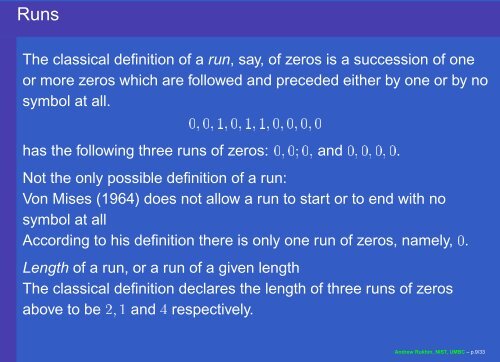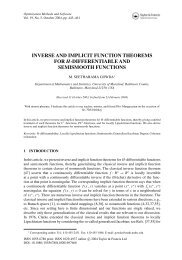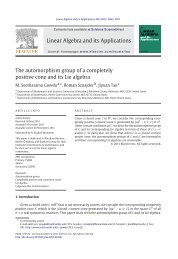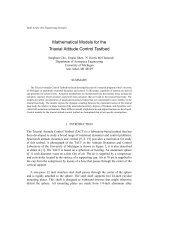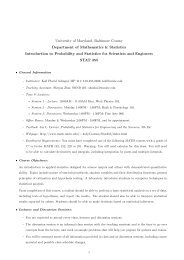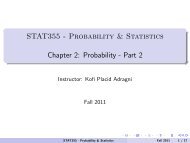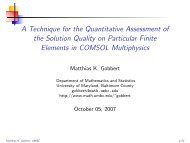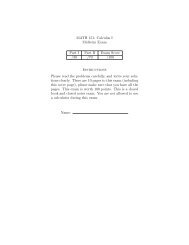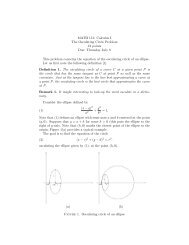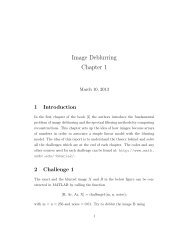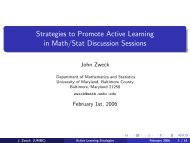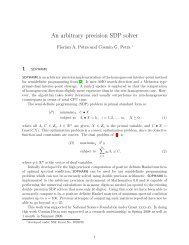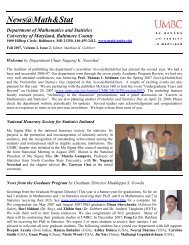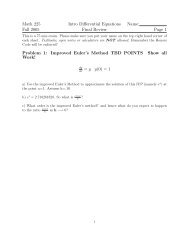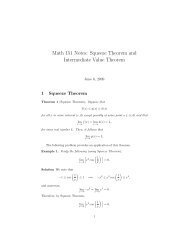TESTING RANDOMNESS - Department of Mathematics and Statistics
TESTING RANDOMNESS - Department of Mathematics and Statistics
TESTING RANDOMNESS - Department of Mathematics and Statistics
Create successful ePaper yourself
Turn your PDF publications into a flip-book with our unique Google optimized e-Paper software.
Runs<br />
¢<br />
© ¢<br />
© ¢<br />
¦¢<br />
© ¢<br />
¢ ¦¢<br />
© ¢<br />
© ¢<br />
© ¢<br />
©<br />
© ¢<br />
© ¢<br />
©<br />
©<br />
The classical definition <strong>of</strong> a run, say, <strong>of</strong> zeros is a succession <strong>of</strong> one<br />
or more zeros which are followed <strong>and</strong> preceded either by one or by no<br />
symbol at all.<br />
has the following three runs <strong>of</strong> zeros:<br />
© ¢<br />
© ¢<br />
©¡<br />
© ¢<strong>and</strong><br />
.<br />
Not the only possible definition <strong>of</strong> a run:<br />
Von Mises (1964) does not allow a run to start or to end with no<br />
symbol at all<br />
According to his definition there is only one run <strong>of</strong> zeros, namely,<br />
Length <strong>of</strong> a run, or a run <strong>of</strong> a given length<br />
The classical definition declares the length <strong>of</strong> three runs <strong>of</strong> zeros<br />
above to be ¢<strong>and</strong> respectively.<br />
.<br />
Andrew Rukhin, NIST, UMBC – p.9/33


